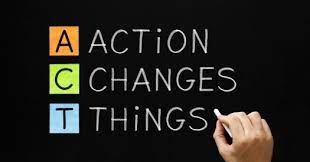
Yoga is a 5,000 year old tradition. Over the years, yoga has developed and molded into new ways to fit society’s needs and cultural values.
Today, the word “yoga” is synonymous with the practice of asana, or yoga postures. We do not picture a yoga class including the reading of Sanskrit texts, chanting mantras, or being a part of a fire ceremony. But historically, these practices are all considered to be a part of yoga.
Carl G. Jung, the eminent Swiss psychologist, described yoga as ‘one of the greatest things the human mind has ever created.’ Yoga is considered a science of the mind. Fitness was not originally the chief aim of the practice, however yoga has become a means of physical exercise that can promote bodily or mental control and well-being.
The Father Of Postural Yoga

The way modern yoga is practiced and understood is from the teachings of a man named Krishnamacharya. In today’s blog post, we will discuss the system of Vinyasa Yoga developed by Krishnamacharya in the 1930’s.
Learning about the different styles, paths, practices, and philosophies that are a part of yoga’s history broadens the course an individual can take when on their yoga journey. Learning about the intent behind the development of a system can also help us understand how it may be of use to us.
I challenge you to begin learning what parts of the yogic tradition work best for you in helping you live an abundantly joyful life.
134 Years Ago...

In 1888 an Indian man named Krishnamacharya (Krish) was born. Krish grew up in India and attended university, where he studied yogic philosophy. After Krish graduated from university, he yearned to learn more about the yoga tradition. He began looking for a guru- as most postgraduates do- and caught word of a man who lived in a cave in Tibet named Ramamohana Brahmachari.
Krish traveled to Tibet and found Brahmachari, who agreed to be Krish’s guru. Krish lived and studied with his guru for many years. Until one day, Brahmachari instructed Krish to return to civilization, get married, start a family, and share his knowledge of yoga with others.
Krish returned to civilization in the 1930’s and established himself in Mysore, India. During this time, the British still occupied India. Many of the civilians faced colonial oppression from the British. The practice of physical yoga postures (asana) was not accepted by most of the Indian population.
The King of Mysore heard about Krish and invited him to the Mysore Palace. The King saw potential in Krish’s yoga and believed that yoga could be a mechanism to empower young Indian boys and men within their heritage. The King wanted to encourage young men to develop healthy bodies and strong minds in the face of British colonial oppression. He also hoped to restore and reinvigorate Indian traditions.
After their initial meeting, the King commissioned Krish to help reinvigorate the physical yoga tradition and uplift civilians. Krish moved into the palace, where he developed a system of yoga that incorporated the principles of asana (physical postures), mudra (hand gestures), pranayama (breathing exercises), meditation, ethics, and psychology.
Krish coined this system vinyasa yoga to describe the linking of movement and breath. The system of vinyasa yoga worked. Not only did vinyasa yoga help to restore Indian traditions and create healthier bodies and minds, but it also mentally empowered the students.
100 Years Later...

In 1988, 100 years after the birth of Krish, a girl named Kristin Wetzel was born. When Kristin graduated high school and entered college, she felt dis-empowered for various reasons.
Kristin loved physical movement, which is what drew her to yoga in the first place. One day, at the age of 18, Kristin decided to try a vinyasa yoga class at a studio called the Yoga Shack in Reno, Nevada. Kristin left this class feeling like she had never felt before and knew she wanted to continue to learn and practice this system of yoga.
Years later, Kristin learned more about the history of vinyasa yoga and was surprised to learn that the intention behind this system of yoga had worked for her. Vinyasa yoga made her feel empowered. She knew she wanted to teach and share this practice with others. So after she graduated from college, she went to India in search of a teacher.
You Can Feel Empowered At Any Stage of Your Yoga Journey

According to Krish, “90% of the benefits of your yoga practice come from the simplest 10% of the practice”.
Using our physical bodies as a vehicle to help uplift and empower us is just one of many tools of yoga. Mastering an Instagram-worthy pose can be fun and rewarding, but this doesn’t necessarily lead to lasting happiness. The skills we acquire when attempting new and challenging poses are what empower the individual, rather than the poses themselves.
90% Of The Benefits Of Yoga Come From
- Slowing down
- Gaining awareness of our breath and body
- Using the breath and body as tools to focus and slow down our mind
- Gaining awareness of our thoughts
- Remembering we have thoughts but we are not our thoughts
- Noticing the sensations of our body
- Observing where our body is in space
- Tuning into what is happening on our mat rather than the things going on around us
- Learning to move our body according to what it needs
- Developing a sense of gratitude for all our body allows us to do
Find Your Power On Your Mat
Yoga teacher Jason Crandell often says, “Yoga is for everybody, but not every yoga pose is for every body”.
Not every pose works for every student. Thinking we should look, feel, or move differently in a pose can feel very dis-empowering. When we move in a way that works for our bodies- despite what is going on around us- we can begin to cultivate and develop a sense of empowerment.
We can change, modify, or opt-out of poses according to our needs. This is where our power lies.
How Yoga/Physical Movement Helps Me Feel Empowered
Before I found vinyasa yoga, I exercised to loose weight. The reasons for moving my body were not mentally empowering. Yoga taught me the psychological benefits of physical movement. I became mentally empowered, but my relationship with my body and overall health improved as well.
Below are some ways that the physical practice of yoga helps me feel more empowered.
I feel empowered when I move my body and I…
1) Follow through on my commitments to myself even when I may not want to at that moment.
2) Remember that to be good at something, I first have to be bad at it.
3) Not letting being bad at something hold me back from trying.
4) Slow down and listen to what my body needs.
5) Explore new physical challenges.
6) Modify, skip, change, or rest if that’s what my body needs.
7) Stick with something even when it’s hard.
8) Have compassion for myself.
9) Take responsibility for my results.
10) Achieve something I’ve never been able to do before.
11) Use movement to improve my physical health.
12) Develop gratitude for what my body allows me to do.
13) Learn new things about my body.
Action Points:

Mental empowerment through physical practice feels amazing. The more empowered we are, the more likely we are to make choices that lead us toward living the life we want.
- Find and dedicate yourself to a physical movement practice that makes you feel mentally empowered.
Remember, there are so many reasons to move your body aside from weight loss.
Any form of exercise is anti-aging, builds bone and muscle strength, reduces the risk of cancer and other diseases, improves your quality of sleep, and strengthens your heart. But I encourage you to engage in a physical practice that also facilitates your psychological well-being. Vinyasa yoga is just one option that exists in our modern world.
Learn More








